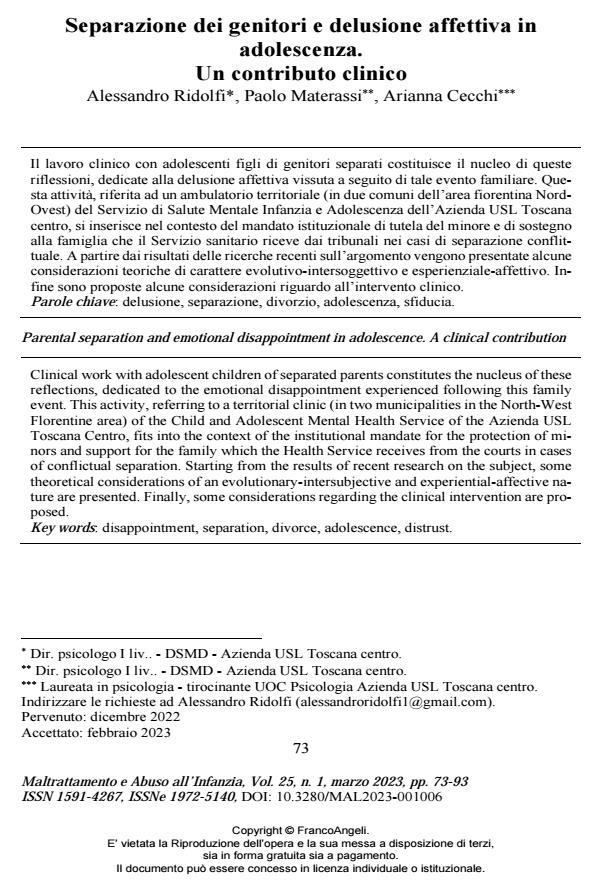Separazione dei genitori e delusione affettiva in adolescenza. Un contributo clinico
Titolo Rivista MALTRATTAMENTO E ABUSO ALL’INFANZIA
Autori/Curatori Alessandro Ridolfi, Paolo Materassi, Arianna Cecchi
Anno di pubblicazione 2023 Fascicolo 2023/1
Lingua Italiano Numero pagine 21 P. 73-93 Dimensione file 221 KB
DOI 10.3280/MAL2023-001006
Il DOI è il codice a barre della proprietà intellettuale: per saperne di più
clicca qui
Qui sotto puoi vedere in anteprima la prima pagina di questo articolo.
Se questo articolo ti interessa, lo puoi acquistare (e scaricare in formato pdf) seguendo le facili indicazioni per acquistare il download credit. Acquista Download Credits per scaricare questo Articolo in formato PDF

FrancoAngeli è membro della Publishers International Linking Association, Inc (PILA)associazione indipendente e non profit per facilitare (attraverso i servizi tecnologici implementati da CrossRef.org) l’accesso degli studiosi ai contenuti digitali nelle pubblicazioni professionali e scientifiche
Il lavoro clinico con adolescenti figli di genitori separati costituisce il nucleo di queste ri-flessioni, dedicate alla delusione affettiva vissuta a seguito di tale evento familiare. Questa attività, riferita ad un ambulatorio territoriale (in due comuni dell’area fiorentina Nord-Ovest) del Servizio di Salute Mentale Infanzia e Adolescenza dell’Azienda USL Toscana centro, si inserisce nel contesto del mandato istituzionale di tutela del minore e di sostegno alla famiglia che il Servizio sanitario riceve dai tribunali nei casi di separazione conflittuale. A partire dai risultati delle ricerche recenti sull’argomento vengono presentate alcune considerazioni teoriche di carattere evolutivo-intersoggettivo e esperienziale-affettivo. Infine sono proposte alcune considerazioni riguardo all’intervento clinico.
Parole chiave:delusione, separazione, divorzio, adolescenza, sfiducia.
Alessandro Ridolfi, Paolo Materassi, Arianna Cecchi, Separazione dei genitori e delusione affettiva in adolescenza. Un contributo clinico in "MALTRATTAMENTO E ABUSO ALL’INFANZIA" 1/2023, pp 73-93, DOI: 10.3280/MAL2023-001006